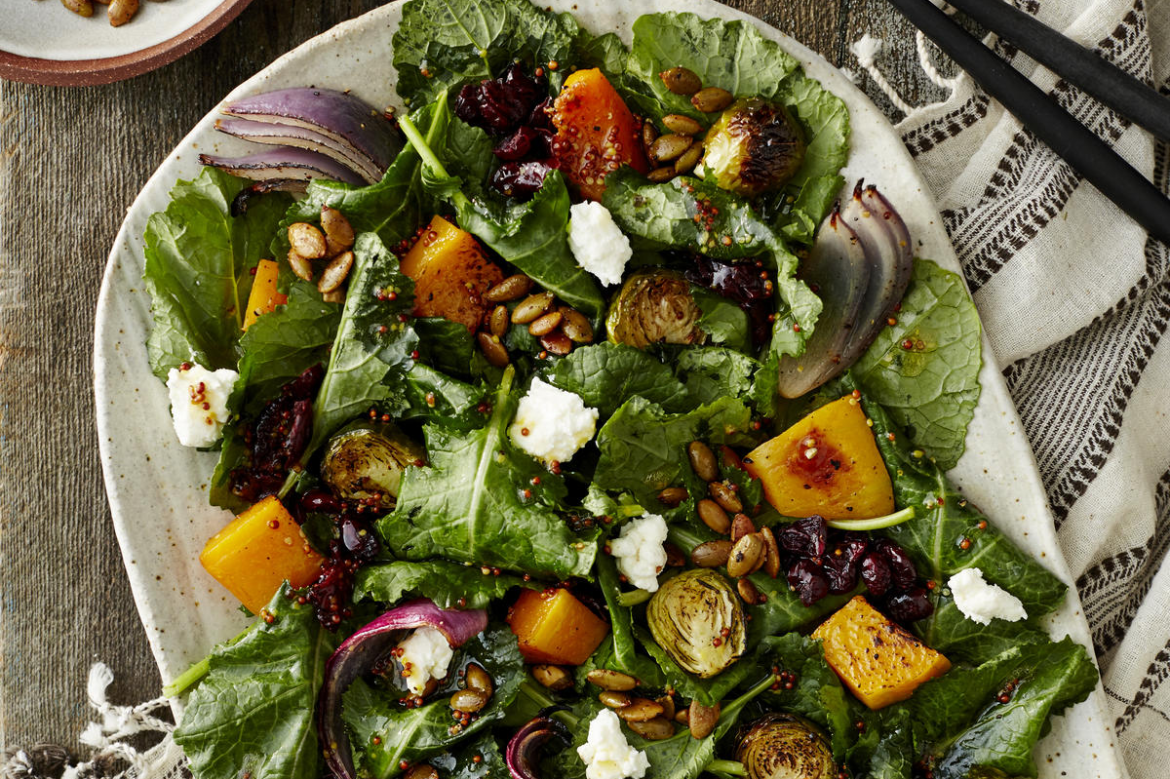Not all salads are created equal when it comes to dropping weight. It’s easy to start off with a healthy plate of nutritious greens, veggies and fruit, but once you start adding high-calorie ingredients, hidden sugars, loading up on oils and creamy dressings, and deep-fried toppings, your salad can easily become a high calorie meal!
Check out these 10 helpful tips from experts on how you can make your salad work for your weight loss!
Add Lots of Dark Leafy Greens
Image Courtesy Of Livestrong
Certified dietitian Leslie Langevin, MS, RD, CD, of Whole Health Nutrition says, “The darker the green, the more nutrition: kale or spinach, mixed greens, even romaine does have a ton of nutrition vs. iceberg lettuce.” Buy a bag of pre-washed, dark leafy greens so you won’t have to worry about washing them once you get home! The more convenient it is for you to make a salad, the more likely it is for you to stick to making them!
Langevin also recommends using cabbage as a base for salads. Not only is it high in fiber, she also explains that cabbage is a “mega-detoxifier [that aids in] cancer prevention (because of its sulphur phytochemical compounds).”
Add Protein
Image Courtesy of Eat Live Learn
A plate of veggies is a healthy start to a salad, but if you want to lose weight and sustain your energy, it’s important to add protein to your plate too! Langevin recommends adding three different types of protein to add variety and proper nutrition.
Consider adding nuts, marinated chickpeas, tempeh, tofu, salmon, cottage cheese, feta, shelled edamame, grilled chicken or sliced veggie burgers for added protein!
Include Cooked Veggies
Image Courtesy of My Recipes
Add cooked veggies for a hearty, filling salad! Cauliflower, steamed broccoli, grilled green beans, sauteed mushrooms and peppers, butternut squash and sweet potatoes are all filling veggies that will create a medley of flavors and textures on your plate!
Add Healthy Fats
Image Courtesy of Recipe Girl
Boost your weight loss efforts by adding healthy fats to your salad! Claudia T. Felty, PhD, RD says, “You need the fat to digest the fat soluble vitamins in the salad. So eating all those plain carrots doesn’t do you a whole lot of good if you’re hoping to absorb all that vitamin A.”
While adding healthy fats to your salad will help you lose weight, it’s important to remember that avocado, seeds, nuts, and oils tend to be high in calories. Measure the amount of healthy fats that you’re placing in your salads to keep your salad low-calorie!
Include Cooked Whole Grains
Image Courtesy Of Cooking Light
Cooked whole grains like farro, barley, quinoa, brown rice and quinoa add complex carbs, fiber and a rewarding chewy texture. Cooked whole grains will also give you energy that will sustain you throughout the day!
Add Color And Variety
Image Courtesy of Martha Stewart
Sometimes salads can be boring. Add a bit of adventure to your salad by adding colorful fruits, vegetables, healthy fats, proteins and cooked grains. It’s also helpful to add variety by switching up how you slice and chop your ingredients. If you usually slice your cucumbers, try ribboning them. If you normally chop your carrots, trying grating them! If you make your salads visually appealing, you’ll be more likely to enjoy eating them!
Pile On The Non-Starchy Veggies
Image Courtesy Of Our Salty Kitchen
Dietitian Rachel Paul, PhD, RD says, “LUNCH should be FILLING! It’s no good to eat an unsatisfying lunch… only to get hungry soon after and not be able to concentrate on work or school! Fill your salad with good protein and fats – and use those non-starchy veggies to add a lot of VOLUME.”
Non-starchy vegetables include, kale, arugula, spinach, cucumbers, broccoli and cauliflower.
Add Lots Of Chunks
Image Courtesy Of Free To Be
You’ll do a lot more chewing if you chop large chunks of veggies in your salad. The more you chew, the more you’ll signal to your brain that you’re eating a lot of food!
Be Careful Of Portions
Image Courtesy Of The Pioneer Woman
When you’re adding tons of healthy veggies to your salad, you can easily lose track of the amount of calories that you’re consuming. Adding in protein, cooked veggies, avocado, nuts, seeds and dressing can turn a low-calorie salad into a salad that contains over 900 calories! When you’re trying to lose weight, Stephanie Clarke, MS, RDN, and Willow Jarosh, MS, RDN, of C&J Nutrition, recommend that your salad should remain between 400-450 calories.
Be sure to add in plenty of low-calorie ingredients like herbs, veggies and vinegar and watch the amount of high calorie add-ins like beans, cheese, whole grains and oils that you’re adding to your salad.
Meal Prep
Image Courtesy of Eating Bird Food
Make a large salad on Sunday night and prep it in jars or containers for a healthy meal that you can enjoy for the rest of the week! You can also make a “salad bar” for the week by pre-cutting all the veggies you’ll need to make a salad.

